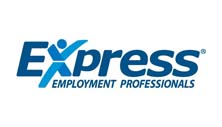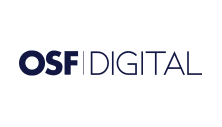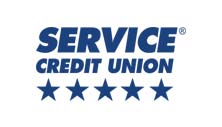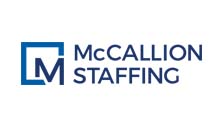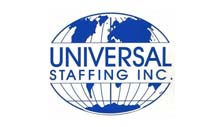How Upskilling Assessments Benefit Employers

Save on New Hire Costs
Hiring new employees is costly and time-consuming. Upskilling taps into current employees’ talents without going through the hiring process.

Boost Workplace Morale
Your best employees are likely motivated by opportunities to grow within the company. Upskilling indicates that you recognize their potential.

Increase Efficiency
Bridging skills gaps for your employees allows you to optimize your systems and structures with today’s technology, helping you achieve results faster.

Boost Your Bottom Line
Your workforce is key for competing in today’s fast-paced business world. Give your employees the tools they need to stand out in the marketplace.
Bring in Fresh Talent
While employee retention is an upskilling benefit, a growth-centered company will attract today’s brightest talent to your company.
Learn How Upskilling and Employee Development Improves Business Performance
Upskill Your Employees and Compete in Today’s Fast-Paced Marketplace
You may wonder how businesses are supposed to keep up with today’s fast-paced changes. There are always new technologies, strategies, and tactics to incorporate, leaving you searching for fresh talent with the latest industry skills and knowledge. The truth is that chasing after new talent with the freshest skill sets is time-consuming and expensive. While fresh talent is sometimes the right answer, when you upskill your employees, they’ll appreciate the investment and likely feel a renewed sense of motivation, knowing they have a path to growth within the company. That’s why professional upskilling is becoming more popular and a preferred skills acquisition strategy.
Why Use Skills Tests to Upskill Your Employees
- Video response questions allow you to get a whole-person feel for whether an upskilling candidate would be the right fit for the opportunity.
- Your employee upskilling committee can rate responses from applicants based on specified criteria.
- Video resumes from employee upskill candidates open opportunities to discover additional areas of strength that could be applied.
- Customizable employee assessments offer deeper insight into whether a certain opportunity is a good fit.
- Allow candidates to perform in simulated situations that would be a regular part of their new role.
- Explore interests and traits that reveal unrealized potential fit for upskilling opportunities.
Looking for More?
Learn about specific solutions designed for your needs, read client success stories and review integration options.
Why eSkill
eSkill provides the most relevant and valid pre-employment assessment tests for skilled jobs.
How it Works
Small business and enterprise solutions for evaluating candidates’ skills quickly, easily, and accurately.
Integrate Your System
Already have an ATS, LMS or HRIS system? Learn how to integrate eSkill with your existing systems.
Subscribe to Our Newsletter for Updates
The Business Leader’s Complete Guide to Employee Upskilling
We are experiencing a massive reallocation of labor and enhancing workers’ skills is a critical part of the solution. This is one reason why upskilling has become a popular workforce development strategy.
Many experts agree that upskilling is the key to developing and retooling the workforce. The U.S. Department of Labor has expanded its Dislocated Worker Grant program by $100 million to provide training and temporary employment to dislocated workers. So, what is upskilling, and how do you help employees achieve it?
Definition of Upskilling
The Merriam-Webster Dictionary says the definition of upskilling is “to equip employees with more advanced skills through education and training.”
While the meaning of upskilling may differ by organization, this definition of upskilling is widely accepted among HR and learning development leaders. Upskilling entails preparing current staff to fill new positions created by shifts in job and skill requirements. The goal and focus are the same—enable continuous learning by providing training and development opportunities that help employees improve their abilities and eliminate skill gaps.
Why Upskilling is Gaining in Popularity
Upskilling provides employees with training and development to improve their abilities and learn new skills. Business leaders find upskilling attractive because it delivers immediate results. Since employees can do their jobs more efficiently, it directly impacts the bottom line and contributes to the business meeting its growth goals.
Upskilling is popular with employees because they can improve their abilities and learn new skills. According to a recent LinkedIn survey, 94% of surveyed employees said they would stay with an organization longer if offered the chance to improve their skills and learn new ones.
As technology creates new opportunities and job roles, it is becoming increasingly important for companies to fill their new positions with candidates who possess relevant, specialized skill sets. Upskilling enables organizations to create development and learning opportunities for their employees and close the digital talent gap so they can fill these open positions while maintaining their current workforce.
Technology is changing the way organizations operate. This means companies must consistently enhance their staff’s technical knowledge and skill sets. Organizations also make workers feel that they are valued and have a dedicated future in the company when they are provided with upskilling and training opportunities.
How Upskilling Benefits Organizations
Organizations need an agile workforce that can quickly learn new skills, adapt to marketplace changes, and adjust to unforeseen shifts in business demands. Implementing an upskilling program is the first step toward creating an agile organization that can quickly respond to changes in workforce dynamics. The following are reasons why industry experts say upskilling is the solution to workforce development.
- Minimize the Impact of Fluctuating Labor Demands
In 2019, the unemployment rate was at a 50-year low. But this changed overnight as employers adjusted to the COVID-19 pandemic. In the post-pandemic era, there have been frequent and rapid shifts in job growth and skills in demand. This has prompted new candidates to enter the labor market and forced businesses to help existing workers adapt. The eSkill Talent Assessment PlatformTM enables employers to accurately measure employees’ skill sets and determine whether they fit a particular job well. HR and learning management professionals can refer to the user-friendly dashboard to monitor skills assessment scores, identify upskilling opportunities, and track the effectiveness of training and development. - Benefits Businesses and Employees
Upskilling is a win-win for both employers and employees because it creates shared value. Employees see career development opportunities as a reason to remain loyal to an organization. According to a recent LinkedIn survey, 94% of employees would stay longer with a company if the organization invested in their development. A Global Talent Trends report showed that organizations that place a priority on employee training experience 53% less attrition. Thus, organizations should view employee upskilling initiatives as a strategic investment that supports business agility and growth instead of an “unnecessary” expense that can be cut when profits are down. - Upskilling Improves Your Bottom Line
Upskilling may be an investment, but it saves organizations money in the long run. Employee turnover is expensive. According to a Gallup report, turnover costs U.S. businesses $1 trillion annually. The cost of losing employees is high, but the organization also loses the proprietary knowledge and experience of tenured staff.Businesses can significantly reduce the need to recruit, hire, and train new talent by focusing upskilling efforts on entry-level and low- and mid-skilled workers whose positions are at risk of becoming obsolete or disrupted by technology.
Upskilling Your Employees Improves Productivity
Upskilling increases productivity and enables employees to work more efficiently. A study conducted by Capgemini Research found that “employees who are upskilled can shift their concentration to activities that contribute to business growth, which drives more output for the organization.”
Google, Walmart, Verizon, McDonald’s, and Marriott International are among the organizations that have invested billions in upskilling programs. Employees can improve existing skills, pursue a college degree, and learn new skills. Then, they can take on additional job responsibilities, transition to more challenging jobs, and move into management.
How do You Implement Upskilling?
Many enterprises utilize skills forecasting models to maximize employees’ skill levels and abilities and build a pipeline of highly skilled workers to meet current and future business demands. For most, the biggest question is, “How do you upskill employees quickly?”
Clearly defining quantitative goals is essential to measuring employee development programs’ effectiveness. For example, if one of your objectives is to increase the number of IT employees who are proficient in Python, Java, or C# by 25%, you must define how including this in your upskilling program will help you meet a specific goal such as improving time-to-market with new products or making it easier to fill critical positions quickly.
Conduct a Skills Analysis
Once you define your primary objectives, your next step is to conduct a skills needs analysis to get an accurate picture of your current workforce skills.
Start by identifying each team member’s deficiencies and mismatches. For example, if a computer proficiency skills test shows an employee has an excellent grasp of MS Word but is not as well-versed in MS Excel, you can provide training to help them enhance their expertise in setting up and working with spreadsheets.
Using the eSkill Talent Assessment PlatformTM to administer skills tests is the best way to assess the abilities needed for specific positions and projects and to identify and measure knowledge gaps between the employee and the new requirements. eSkill’s comprehensive library of customizable skills tests makes it easy to assess employees, and it is easy to organize scores and share results instantly using the intuitive dashboard.
What is the Impact of Upskilling?
In today’s fast-changing and uncertain workplace environment, your organization must be able to pivot to adjust to market demands. You are future-proofing your organization by assessing your staff’s current and future skill needs and implementing employee upskilling programs.
When HR leaders ask, “What is an example of upskilling?”, we cite the following examples:
- In September 2021, Amazon committed $1.2 billion to providing access to education and skills training programs for 300,000 employees—including college tuition for front-line employees—through 2025. As part of its Upskilling 2025 initiative, Amazon offers training programs that support Amazon employees as they gain the expertise they need to move into more highly skilled, better-paying, technical, and non-technical roles.
- Google, Walm art, Verizon, McDonald’s, and Marriott International are just a few organizations that have invested billions in upskilling programs. These programs help employees learn new skills, improve existing skills, and earn a college degree to move into new roles or management positions.
It is almost impossible to determine the impact of upskilling and whether your initiatives are working unless you can track staff progress. So, HR leaders should leverage industry-leading tools such as the eSkill Talent Assessment PlatformTM to monitor the results.
What is the Difference Between Training and Upskilling?
When HR professionals ask us, “What is the difference between training and upskilling, and which is better?” we tell them there is no black-and-white answer. It depends on what you want to accomplish.
These are some common disadvantages business leaders cite about training programs.
- They are expensive: One of the biggest disadvantages businesses cite about employee training is the cost. If you manage training internally, you must staff a department and pay employees to facilitate courses and workshops. If you use outside trainers, you have to pay them for their time. You also pay for the course and travel expenses if you send employees to off-site seminars or conferences.
- It takes employees off task: While many managers think training is essential, they believe completing projects on time and within budget is more important. Having one or more employees away from their jobs for even one day can be disruptive. This is why many managers push training to the bottom of their priority list.
- Lack of control over material: While standard best practices exist in any industry, most companies want things done a certain way. When managers delegate training, they lose control over what employees learn. So, if the trainer gives instructions counter to the manager’s instructions, employees may be confused about which information is correct and could even pick up bad habits.
- It does not stick: A big complaint many organizations have with training is it is quickly forgotten. Employees are excited and motivated during the course or workshop and return to the office ready to try out what they have learned. However, they revert to their old habits within a few days. So, managers see training as a waste of money because they do not see any return on the investment.
Why Organizations Are Upskilling Employees
Organizations are more receptive to upskilling employees because they can see immediate results. Upskilling helps employees do their current jobs better and more efficiently. So, it directly impacts profitability, which allows the business to meet its goals. Employees are happy because they have the opportunity to improve and learn new skills. According to a recent LinkedIn survey, 94% of surveyed employees said they would stay with an organization longer if offered the chance to improve their abilities and learn new skills.
These are some other reasons organizations are opting to upskill employees.
- Improve productivity: Upskilling your staff increases productivity and enables your team to work more efficiently. According to a Capgemini Research study, upskilled employees can adjust their focus to activities that contribute to business growth, which improves organizational output.
- Retain good employees: Many entry-level and low- and mid-skill-level positions are becoming obsolete or disrupted by technology. By upskilling employees in these roles, businesses can retain good employees by helping them acquire the skills they need to take on a similar role or even train for a completely different job. Organizations use an industry-leading solution such as the eSkill Talent Assessment PlatformTM to determine what employees know so they can determine what additional training is needed.
- Build an internal talent pool: In 2021, 3 million Americans left their jobs. As companies struggled to find qualified employees to fill critical positions, they learned the importance of developing current staff to build an internal talent pool. Ensuring employees are ready, or almost ready, to assume new responsibilities is much less expensive and less risky than recruiting, hiring, and training new talent. As a case in point, organizations that use the industry-leading eSkill Talent Assessment PlatformTM have reduced hiring and training costs by as much as 70%.
How do You Promote Upskilling?
Investing in employee upskilling will help your organization build a skilled talent pool and lay the groundwork for workforce development programs that prepare your organization for success. To get started, research industry best practices and use success stories to obtain buy-in with internal stakeholders across your company.
Are you ready to learn how upskilling can help your company future-proof your workforce? Contact us to request a demo.







